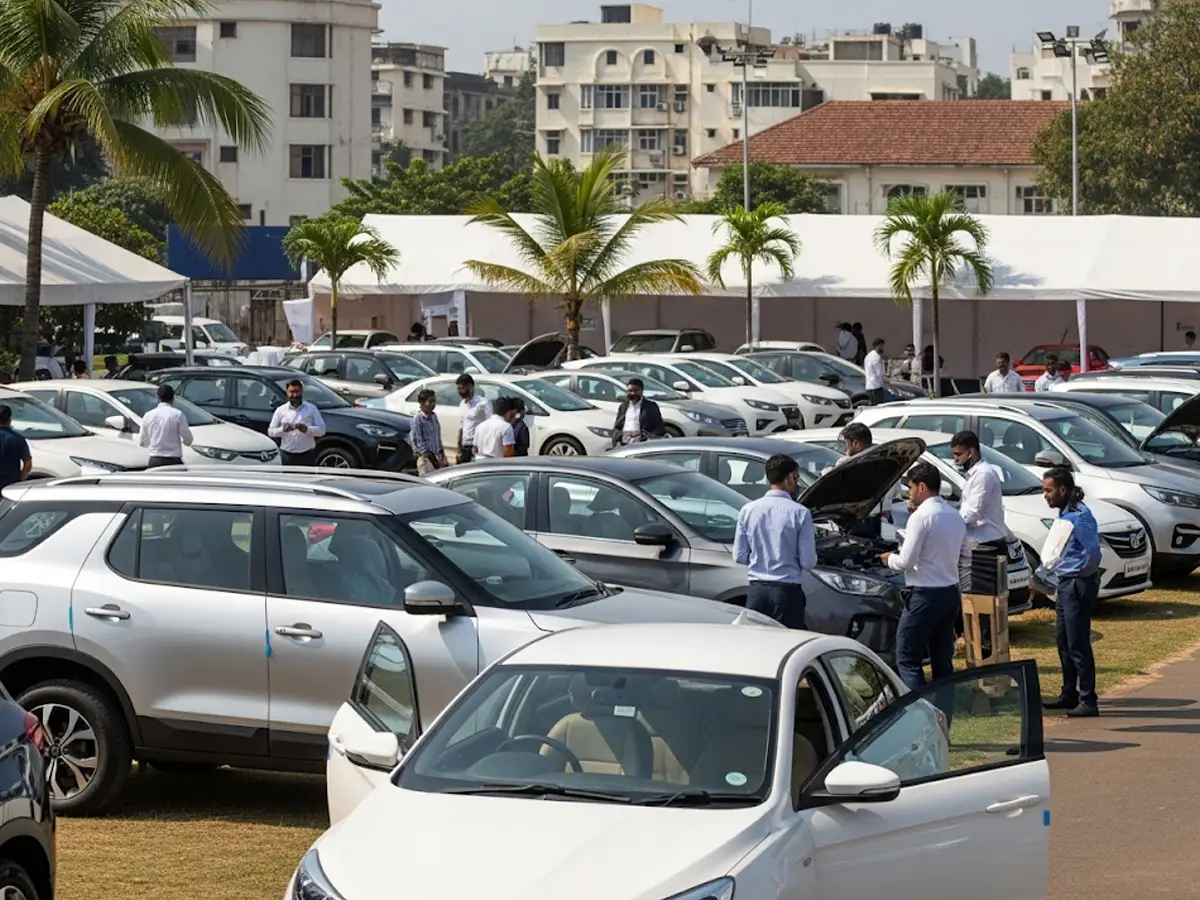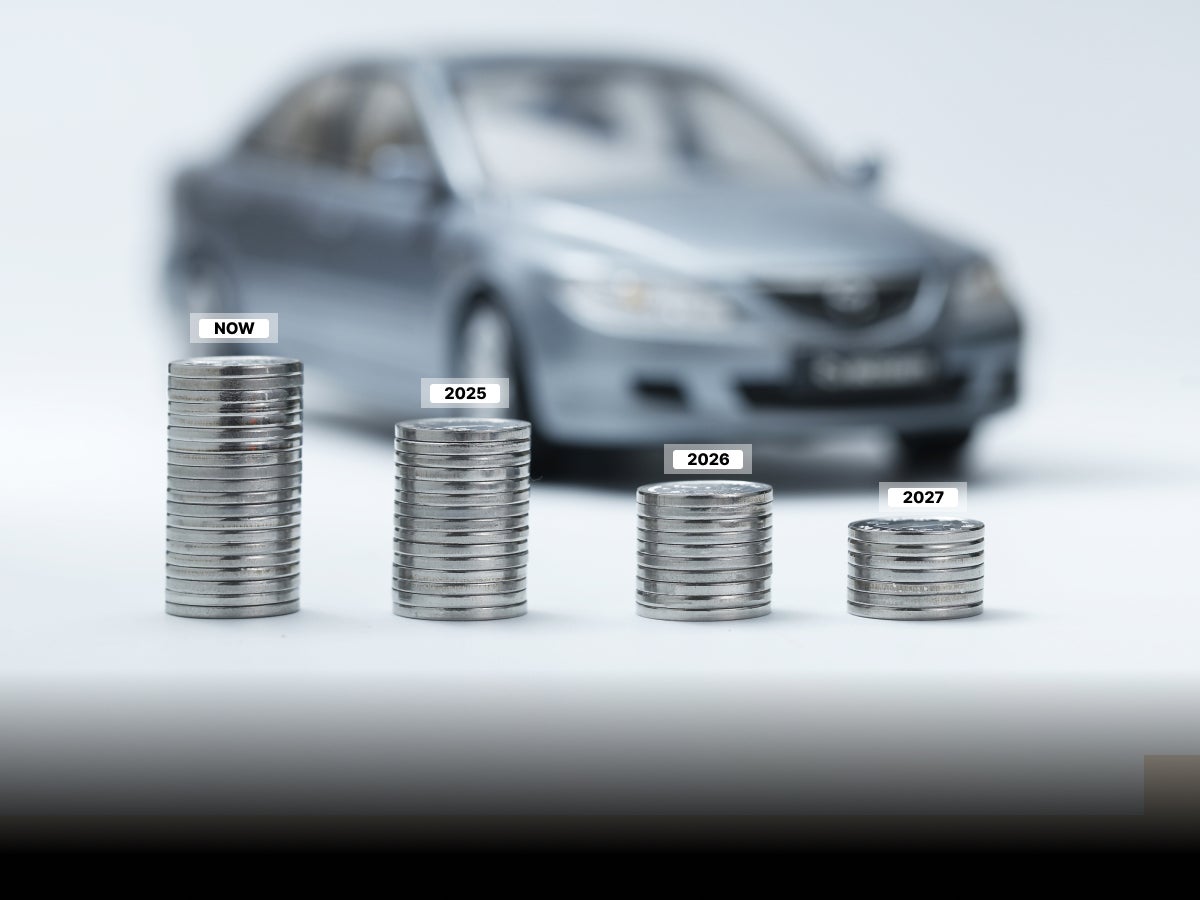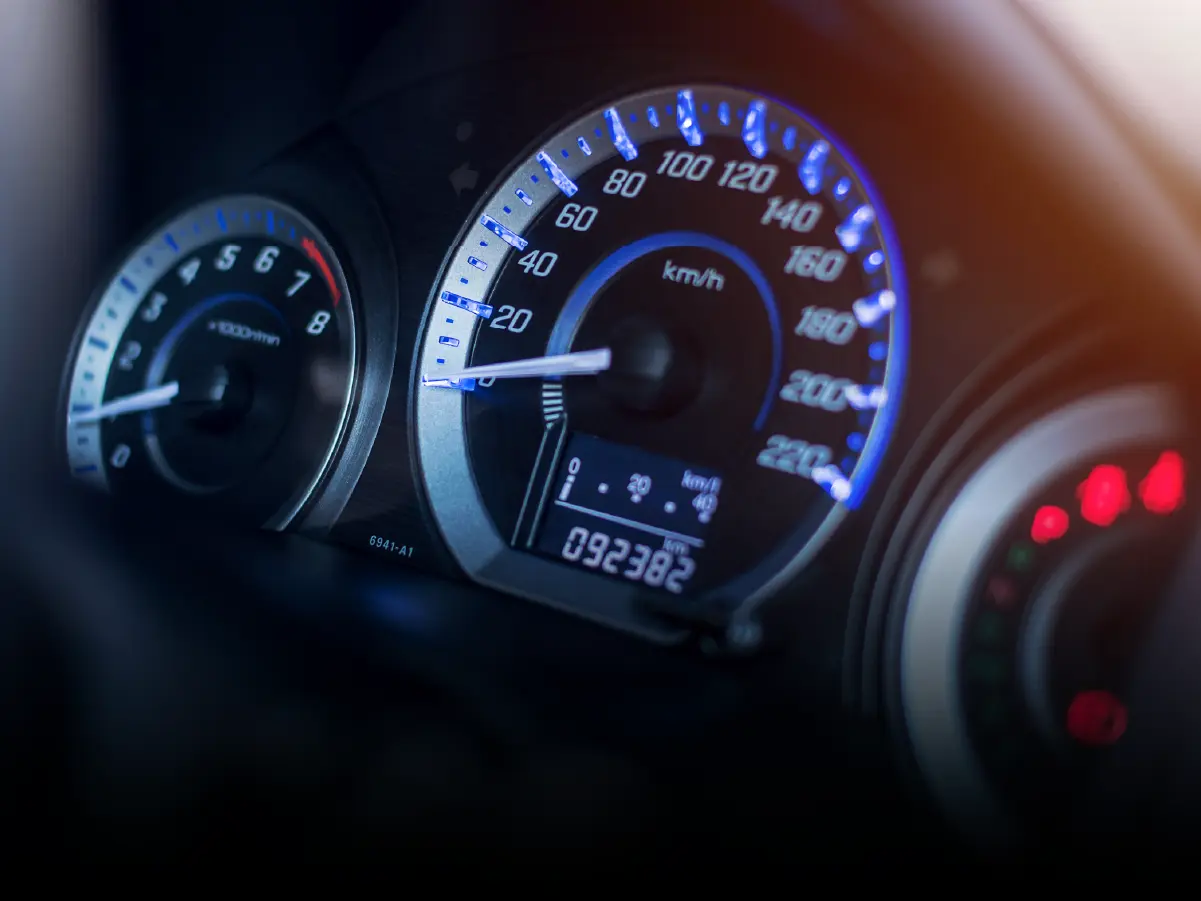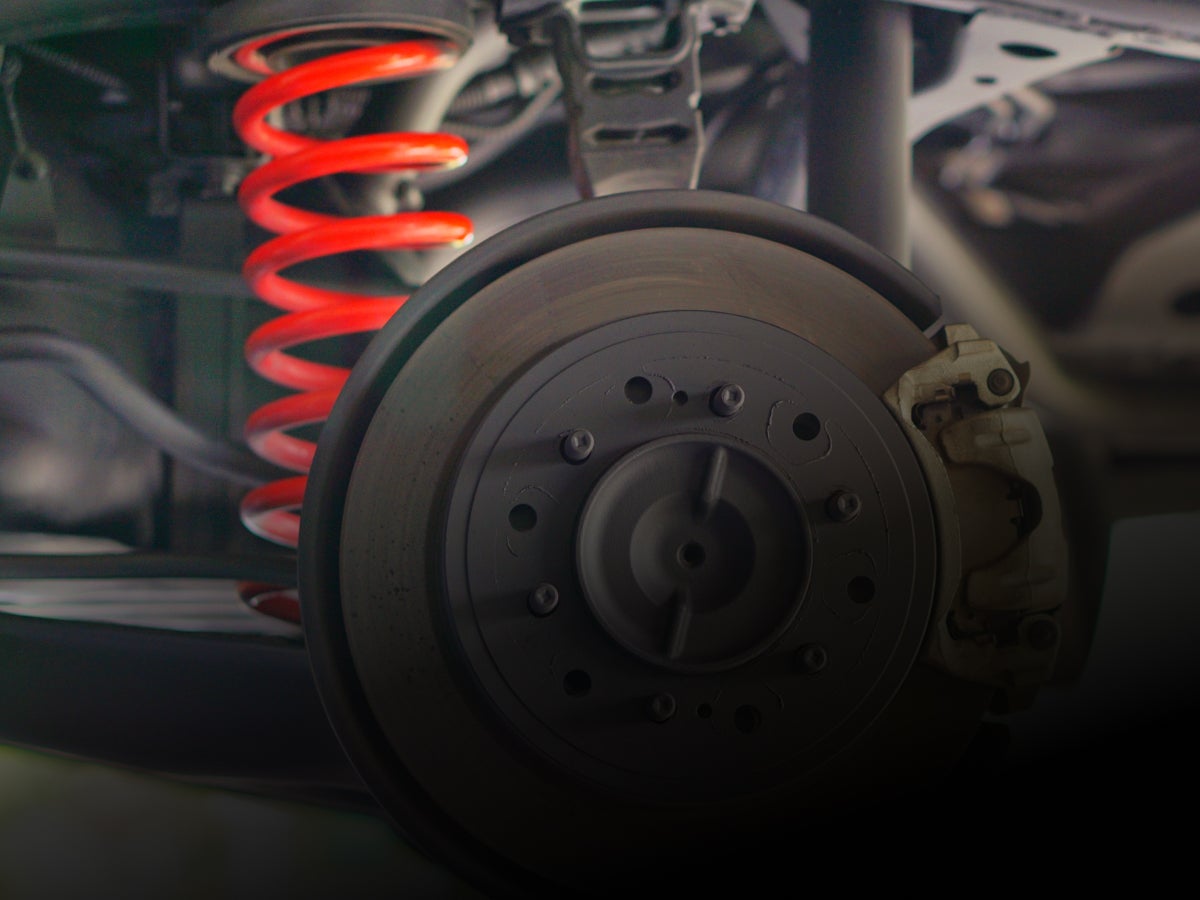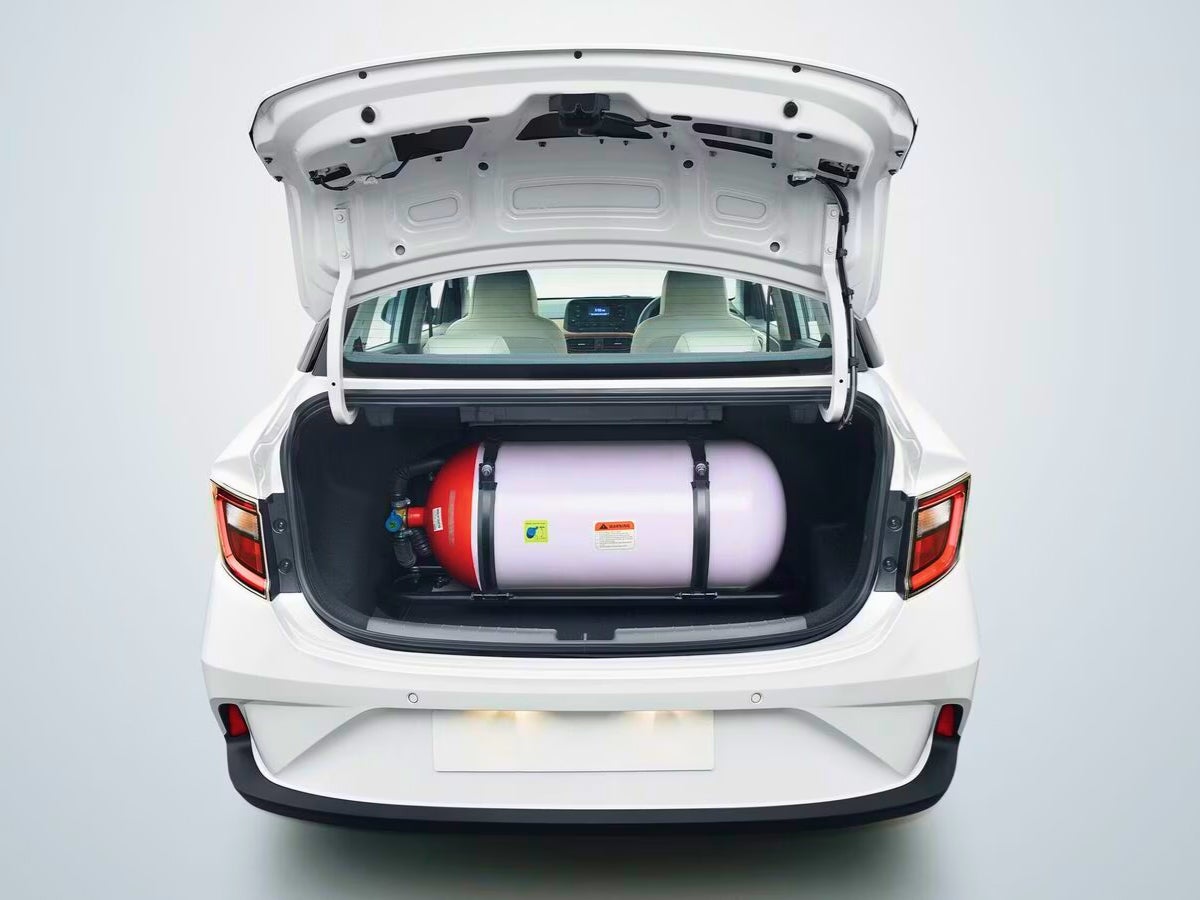

How to Increase Mileage of EcoSport?
- 1Ford EcoSport gives 14.7–21.7 kmpl ARAI mileage across petrol and diesel
- 2Boost city mileage with smoother gear shifts, lighter throttle, and timely service
- 3Drive EcoSport at 85–95 kmph with low load for better highway mileage
Whether you drive the high-revving 1.5L Ti-VCT petrol or the torque-loaded 1.5L TDCi diesel, the EcoSport mileage has always divided opinions among owners. On paper, the ARAI-certified figures of 15.9 kmpl (petrol) and 21.7 kmpl (diesel) seem solid, but real-world results often differ greatly. With its strong build, SUV stance, and feature-rich cabin, the EcoSport isn’t a lightweight car and that can reflect on your fuel efficiency if you’re not mindful of how you drive.
If you've noticed rising fuel costs or your MID (Multi-Information Display) flashing mileage figures that seem below expectations, you're not alone. This blog breaks down official and user-reported EcoSport mileage numbers across variants, delves into city vs highway usage, and most importantly, shares car-specific tips to help you boost your Ford EcoSport’s mileage without hampering the joy of driving.
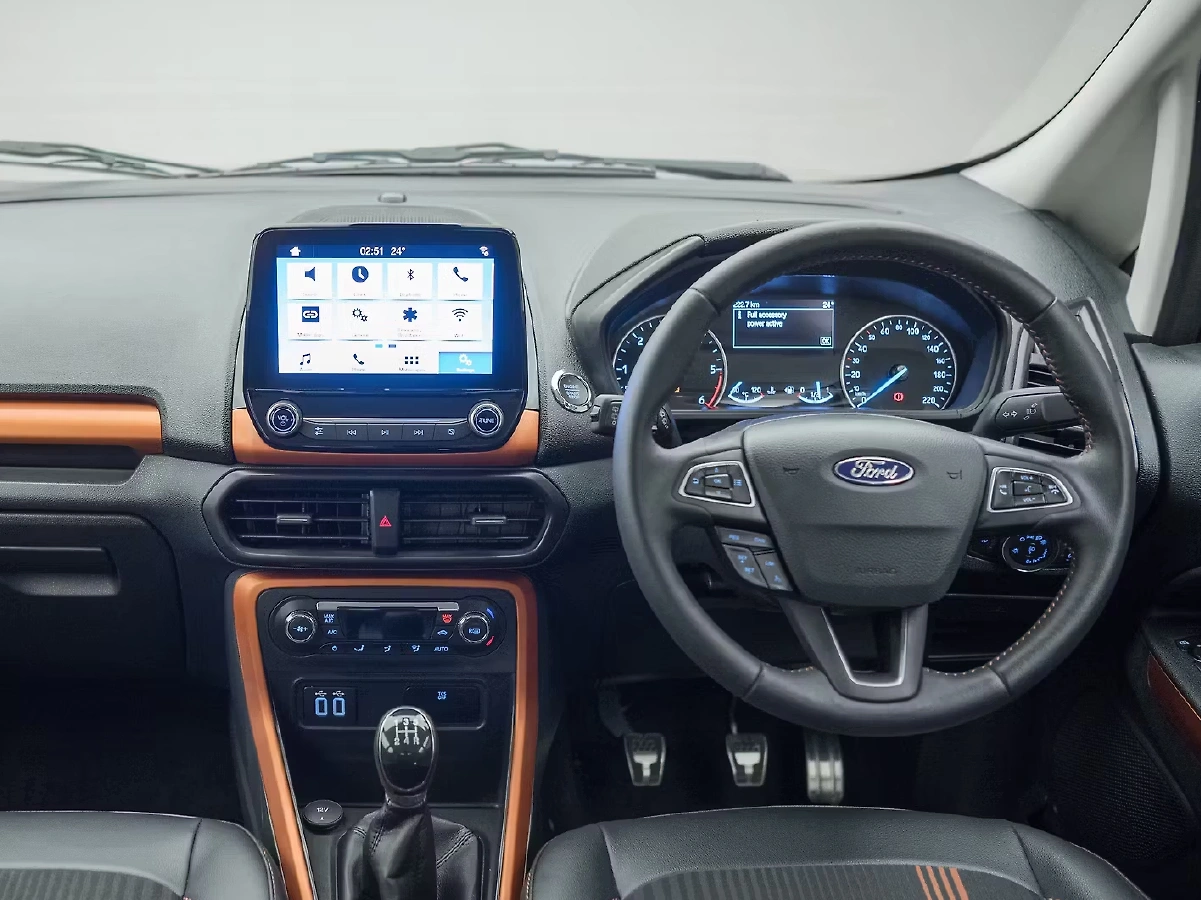
ARAI-Certified Ford EcoSport Mileage
Here’s a breakdown of ARAI-tested mileage figures across the main variants:
| Variant | Fuel Type | Transmission | ARAI Mileage |
| 1.5L Petrol MT | Petrol | Manual | 15.9 kmpl |
| 1.5L Petrol AT (Torque Conv.) | Petrol | Automatic | 14.7 kmpl |
| 1.5L Diesel MT | Diesel | Manual | 21.7 kmpl |
Keep in mind, these are ideal test conditions. Real-world numbers are usually 3-5 kmpl lower, depending on how and where you drive.
Ford EcoSport City Mileage
With its heftier build and taller stance, EcoSport mileage in city driving can vary depending on traffic and usage:
- Petrol Manual: 11–13 kmpl
- Petrol Automatic: 9–11 kmpl
- Diesel Manual: 15–17 kmpl
Short trips, excessive idling, and aggressive clutch use (or inefficient AT behaviour) are the main reasons for low EcoSport mileage. Let’s go over the main aspects one by one.
Factors Affecting Ford EcoSport City Mileage
1. Engine Load in Low Gears
The 1.5L petrol engine of EcoSport should be kept in the ideal range of RPM. Riding in 1st/2nd gear for longer durations in traffic will result in needless burning of fuel and even the petrol AT does not downshift as smartly.
2. Heavy AC Usage in Idle
The AC in EcoSport is strong, but when you idle with the AC on its peak, it will consume more fuel than you can imagine, especially during hot days when the compressor is working extra hard.
3. Frequent Short Runs
Running errands or short trips of under 2–3 km prevents the engine from warming up. Cold engines will use a lot more fuel and will not run effectively until they get warmed up.
4. Weight and Accessories
Got chunky roof rails, larger aftermarket alloys, or a boot full of gear? Added weight directly impacts city mileage, especially in bumper-to-bumper conditions.
5. Tyre Pressure & Age
Under-inflated tyres are a known mileage killer, but worn-out or overly wide tyres also lead to poor mileage. Stick to OEM specs and check pressure every 10 days.
Improving Ford EcoSport City Mileage
Here is what you can do in case your daily driving involves a lot of traffic lights, narrow roads, and slow traffic:
1. Use the Gearbox Smartly
In petrol manuals, shift up early at 2000 RPM. Diesel owners can change even sooner, at 1700–1800 RPM. Never drive in lower gears needlessly, as this is where most of the fuel goes to waste.
2. Switch Off at Long Stops
EcoSport does not have automatic idle start-stop, so it is best to shut off the engine manually when you halt at signals that are likely to take more than 45 seconds.
3. Lighten the Cabin
Get that roof box, camping gear, or unnecessary items out of the boot when not needed. A lighter vehicle responds better and consumes less fuel, particularly in the second and third gears.
4. Use the AC Wisely
Only use AC when necessary. On cooler days, open the windows, drive slower and use cabin circulation instead of external airflow so that the compressor does not have to work hard to cool the car.
5. Stay on Top of Maintenance
Regular oil changes (particularly on the petrol AT), clean air filters and healthy spark plugs can do wonders for the car’s mileage.
Ford EcoSport Highway Mileage
The EcoSport’s rugged construction, wide stance and tuned diesel engine make it a great long-distance cruiser. But as it’s just a tad heavier than the rivals and not the most aerodynamic in shape, you need to be just a bit more careful to achieve those top mileage numbers.
Here’s what you can expect on longer runs:
- Petrol Manual: 16–17.5 kmpl
- Petrol Automatic: 14–15 kmpl
- Diesel Manual: 19–21 kmpl
These numbers are possible with steady highway cruising at 85–95 kmph, minimal AC usage and good road conditions.
Factors That Impact Ford EcoSport Highway Mileage
1. Boxy Aerodynamics at Higher Speeds
The EcoSport’s upright stance and SUV-like silhouette cause more wind resistance after 100 kmph. Unlike some sleeker hatchbacks, its efficiency starts dropping sharply once you cross into triple-digit speeds.
2. Diesel Sweet Spot
The 1.5L TDCi diesel offers the best mileage between 1750–2200 RPM, as beyond that, the power curve flattens, and efficiency drops. Driving above this band for long durations will lower your tank range.
3. Petrol AT Gearbox Logic
The 6-speed torque converter in the EcoSport petrol AT isn’t tuned for aggressive downshifts. If you use too much throttle while overtaking, it often holds lower gears longer, leading to higher fuel burn.
4. Poor Use of Coasting
Many EcoSport drivers forget that this car coasts well in gear at high speeds. Keeping your foot off the throttle downhill or during light slopes (without going into neutral) uses engine braking efficiently and saves fuel.
Improving Ford EcoSport Highway Mileage
Want to get better mileage out of your next road trip or intercity drive? These tips are specific to how the EcoSport behaves at highway speeds:
1. Drive in the Diesel Powerband
For diesel variants, stay between 80–95 kmph in 5th gear, where torque delivery is strong but engine RPMs are still low. This is the EcoSport diesel’s real sweet spot, push it further and you lose efficiency.
2. Use the Manual Mode (AT only)
If you're driving the petrol AT, make use of the manual +/- tiptronic function during overtakes or steep climbs. It prevents the gearbox from holding onto lower gears too long and saves fuel.
3. Fill Tyres with Nitrogen
Nitrogen-filled tyres don’t expand as much under heat, giving you more consistent pressure over long journeys. It’s a small touch, but many EcoSport highway users swear by it.
4. Keep Engine Revs Under Control
The petrol EcoSport doesn’t like to be revved too hard. Stick to 5th gear cruising around 2500–2800 RPM for petrol MT users. Beyond that, mileage dips rapidly, even if you’re not going that much faster.
Summary
EcoSport mileage depends on how well you adapt to its driving characteristics. City mileage benefits from light throttle use, smart gear shifts, and good maintenance, while highway economy improves when you stay within the optimal RPM range and avoid unnecessary drag or load. Even if the EcoSport mileage doesn’t match ARAI claims, these tailored tips can help you come close without compromising on performance or comfort. If you're in the market for a well-maintained Ford SUV, check out the used Ford EcoSport options on CARS24. You’ll find multiple petrol and diesel variants across years, which are all tested and certified for peace of mind.
Frequently Asked Questions
Expand all